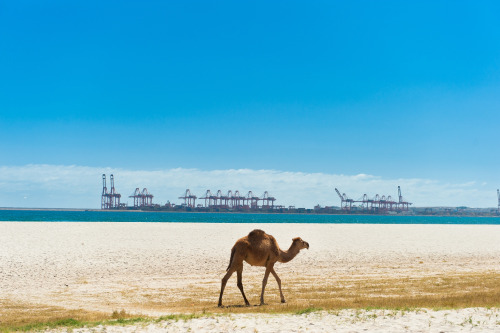Oman’s continued growth relies on improved integrated logistics infrastructure and regulatory reforms, according to Kim Fejfer.Kim Fejfer, CEO APM Terminals, noted plans for further infrastructure investment and the expansion of free trade zones as well as regulatory reforms as key factors for the continuing growth of Oman as a gateway and commercial center for the Persian Gulf Region, in a keynote address to the second annual GCC (Gulf Cooperation Council)) Supply Chain & Logistics Conference in Muscat.

“Oman has a good opportunity to improve its business environment in terms of ease of doing business, developing integrated transport chains that can even better link road, rail and air transport through a world-class port, capable of accepting the largest vessels in the world and to further develop world-class industrial parks and free zones near these maritime gateways” said Kim Fejfer.

He added that “by simplifying the business regulatory environment – Oman will attract even more entrepreneurs and capital that will reduce barriers to cross border trade.”
image
The Salalah Free Zone plans additional investments totalling $15 billion USD by 2028, with chemicals and materials processing, manufacturing and assembly, and logistics and distribution to the specific target market areas.
A caustic soda facility and an LPG plant are scheduled to be operational by the end of Phase I of the expansion by 2018. Linking sea and air logistics centers to free trade zones will be an essential component of economic growth.

A 20-year Port Master Plan, now in effect until 2030, is calling for the development of a Salalah Hub that includes direct rail connections to commercial and population centers within the GCC, the construction of food processing, distribution and warehousing facilities, and new terminals for cruise ships and liquid bulk storage. An expansion of the port’s annual general cargo handling capacity to 20 million tons of dry bulk commodities and more than 6 million tons of liquid products is already underway.
The Port of Salalah, which is managed by APM Terminals, and in which the company holds a 30% share, is one of the most productive container facilities in the Middle East, handling three million TEUs in 2014. The port also handled 10.3 million tons of general cargo for the year, representing an increase of 30% over 2013. Current plans to link the port to the GCC rail network will provide efficient transportation to inland locations while reducing truck traffic and diesel engine emissions.
Source: APM Terminals